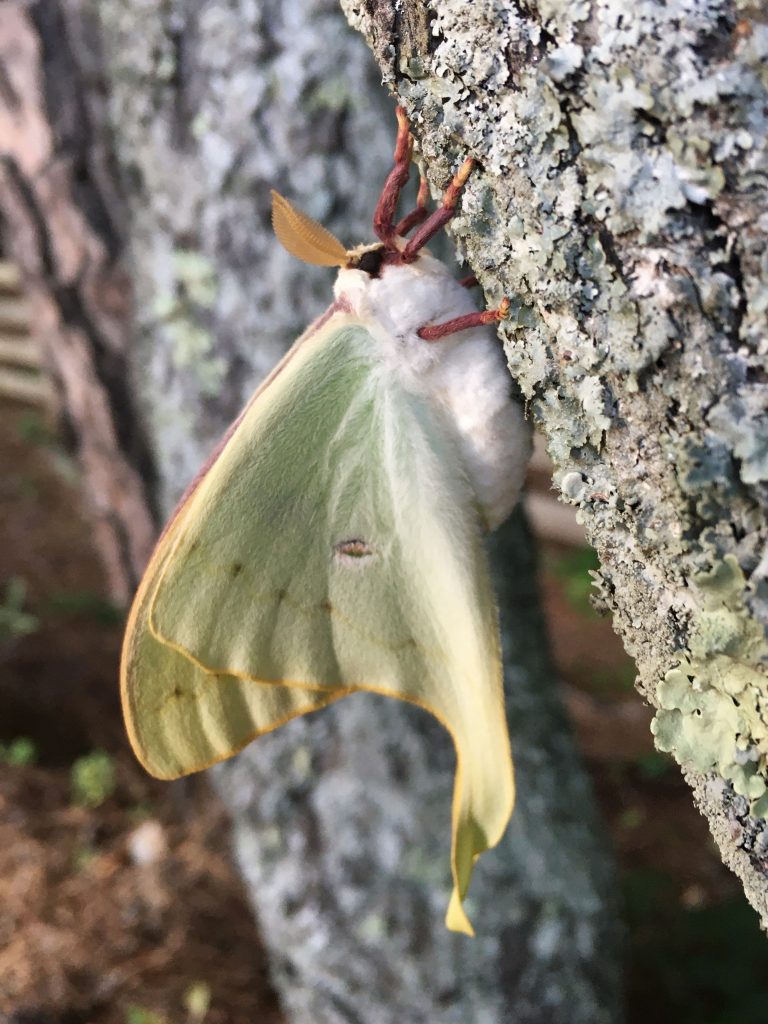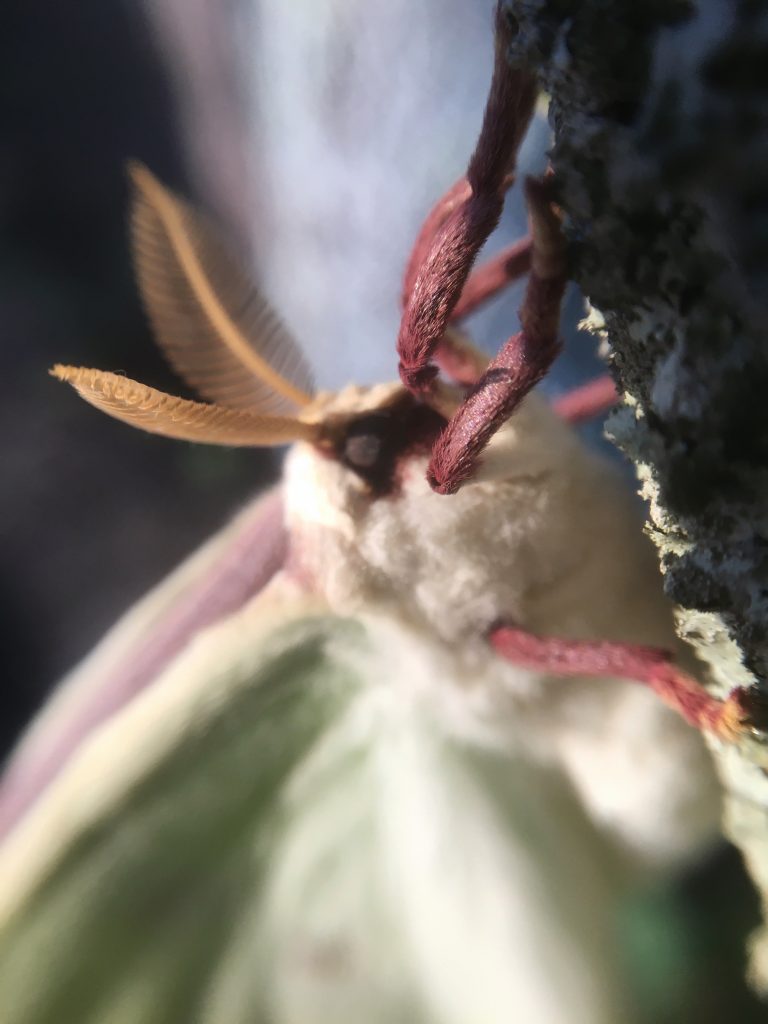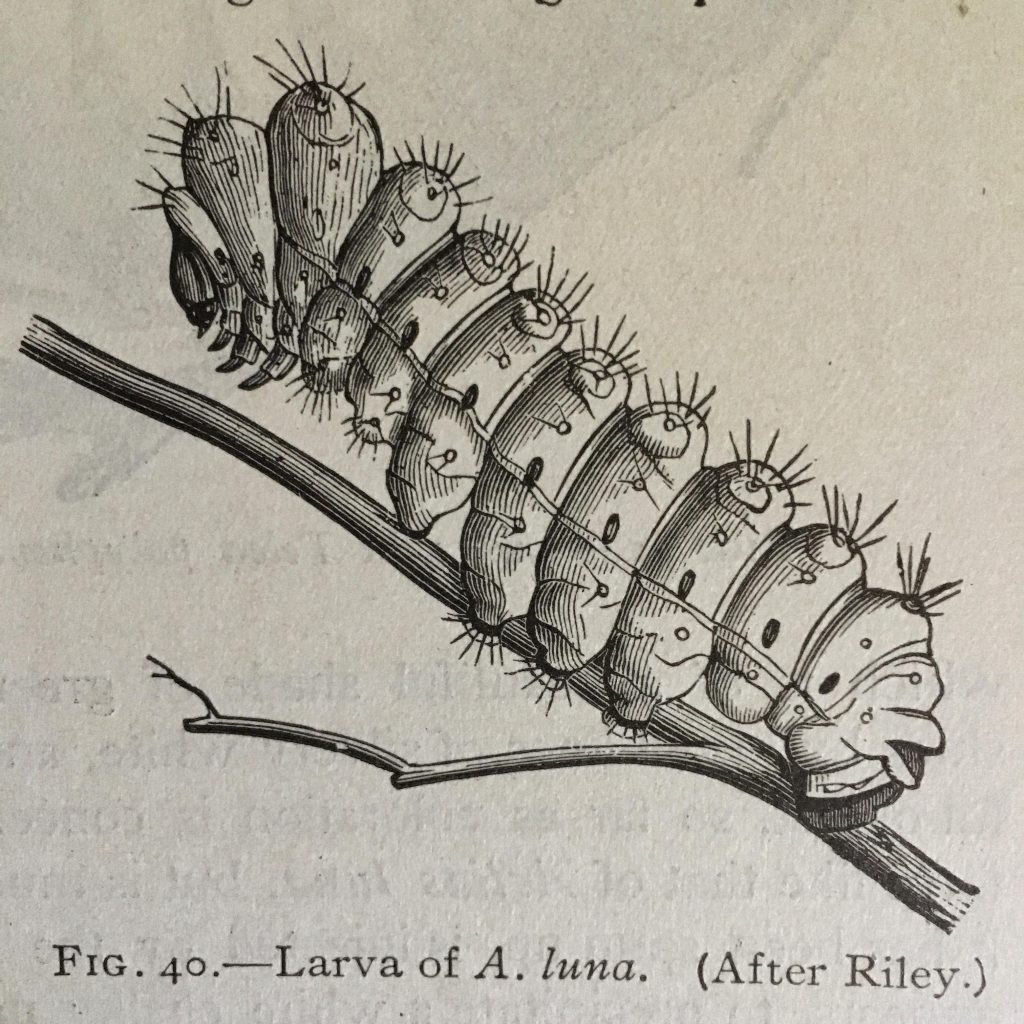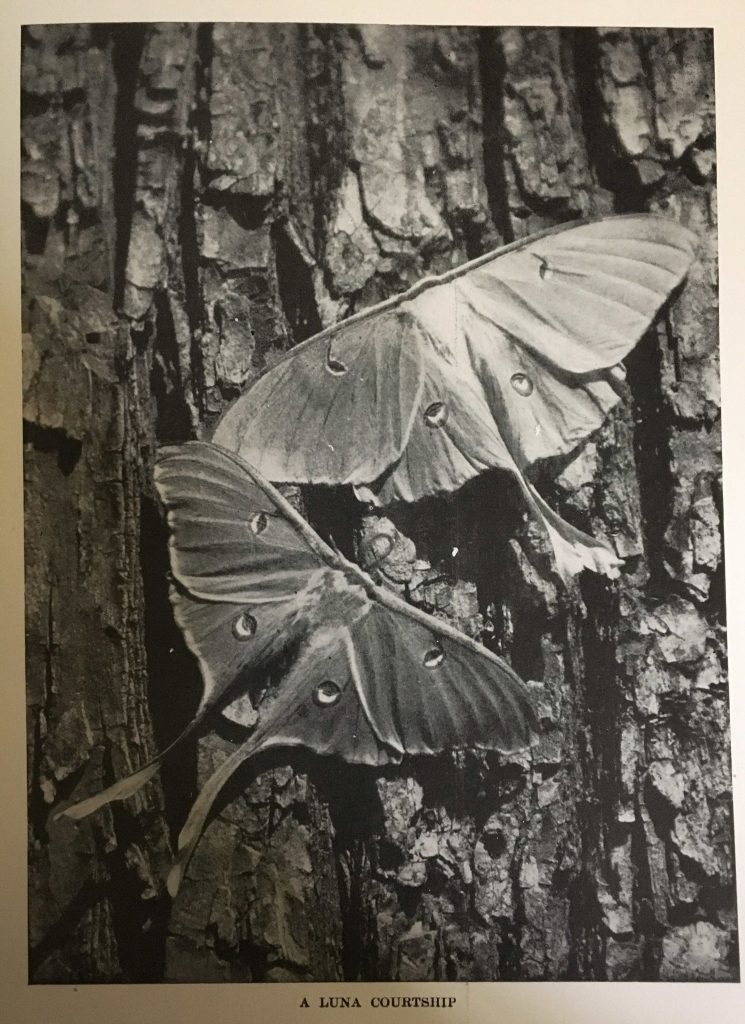



June is the time for appreciative people to sing in praise of the moths…. (Gene Stratton-Porter)
THE OTHER EVENING, along a stretch of Piney Woods Church Road bordered primarily by loblolly pines, with a scattering of sassafras, sweet-gum, and persimmon, I encountered a male luna moth. When I met up with him, he was just in the process of unfurling his elegant wings; half an hour later, when I left him, he had achieved the glorious pose in the last of the series of photographs above.
SEEKING TO LEARN MORE OF LUNA’S WAYS, I turned to my bookcase with its growing collection of old natural history books and field guides, wondering what nature writers thought and wrote about Actias luna over one hundred years ago. First, these brief words, from “The Moth Book” by W. J. Holland, 1916:
This common and well-known insect has an extensive range from Canada to Florida and westward to Texas and the trans-Mississippi States as far as the region of the great plains. The larva [see below]…feeds upon the various species of walnut and hickory, the sweet-gum, the persimmon, and other trees. In North Carolina it appeared to be particularly fond of the persimmon. The cocoon is thin and papery, spun among leaves, and falls to the ground in autumn.

Next, I consulted my copy of “Moths and Butterflies” by Mary C. Dickenson, 1901, with a less than satisfactory result:
The larva feeds on hickory, walnut, and birch; and the cocoons are found under these trees…. The cocoons are very thin, so thin that color can be seen through them and the time of change from the green caterpillar to the brown chrysalis be ascertained. The large light green moth is very beautiful indeed and is a great favorite with amateur collectors.
Finally, I opened Gene Stratton-Porter’s “Moths of the Limberlost” from 1921, where I found this richer and far more satisfying account of the majestic creature I had seen:
Clinging to my finger, the living creature was of such delicate beauty as to impoverish my stock of adjectives in the beginning. Its big, pursy body was covered with long, furry scales of the purest white imaginable. The wings were of an exquisite light green colour; the front pair having a heavy costa of light purple that reached across the back of the head: the back pair ended in long artistic “trailers”, faintly edged with light yellow. The front wing had an oval transparent mark close to the costa, attached to it with a purple line, and the back had circles of the same. These decorations were bordered with lines of white, black, and red. At the bases of the wings were long, snowy, silken hairs; the legs were purple, and the antennae resembled small, tan colored ferns. This is the best I can do at description, A living moth muse be seen to form a realizing sense of its shape and delicacy of colour.
